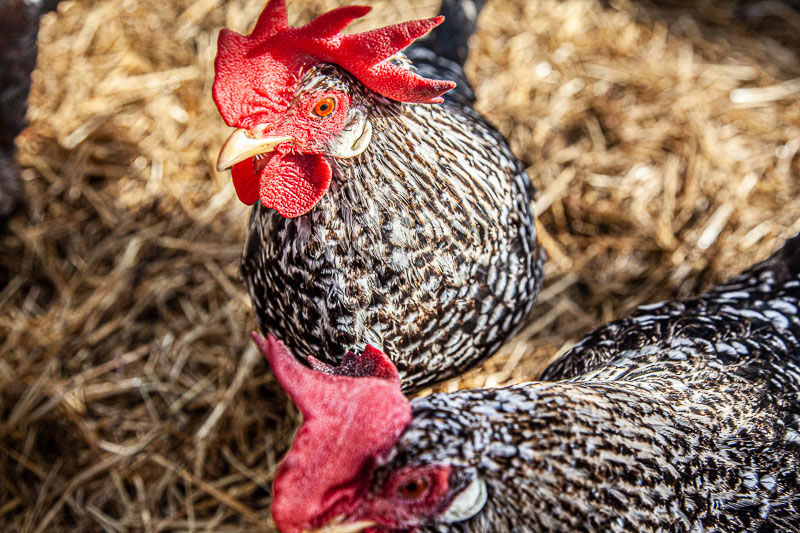
We have chickens after a four-year break.
First, we needed to build our home, the farm stay, the piazza shed. We needed to plant thousands of trees, and grasses, and fruit orchards and berries and chestnuts and oaks, and hazelnuts and our kitchen garden.
There is still a great deal to plant, but we realised we had reached the point where we could take time out to build a chook house.
To buy the chickens I needed to do quite a bit of research. They are not as regularly available as I’d remembered.
Did I want to buy day old chicks? No, I didn’t have the equipment or time at this stage to raise them, but in the future that would be great. Did I want the hens being sold by free range farmers who were passing them on as they were less productive? No, I really wanted chickens that would supply us with a steady number of eggs from the beginning.
I wanted to buy 18-22-week pullets, ready to lay eggs.
I really needed eggs. We had been buying two dozen a week at a cost of $16. A very fair price because the chickens were from local free rage farms that I was 100% committed to supporting. I never want to eat eggs from factory farmed chickens. From places where chickens have the most miserable, tortured lives and where they are fed a constant slurry of antibiotics. And this is no exaggeration. Any basic google search will show you dozens of industry sites that talk about the common use of antibiotics in chicken feed. If you crammed 2000 people in one very tiny house with no access to sunlight, fresh air, and bathing conditions, we too would need to compliment all our meals with antibiotics to prevent an outbreak of disease.

Ancona
Heritage or hybrids…. the answer for us is heritage. We are not commercial farmers. We are not trying to make a living from eggs. If we were then I have little doubt that we would have gone for hybrids. Heritage breeds are commonly dual purpose: eating and eggs. And that is what we wanted. They lay less eggs a year but lay for longer and live longer lives. I have always wanted to play a role in helping to preserve heritage breeds because biodiversity is extremely important. It builds resilient communities.

New Hampshire
We purchased two Silver Wyandottes, and one male Silver Wyandotte, two New Hampshire, two Anconas and one Hamburg. They are all cold hardy and suited to our cool temperate climate.
How to look after chickens
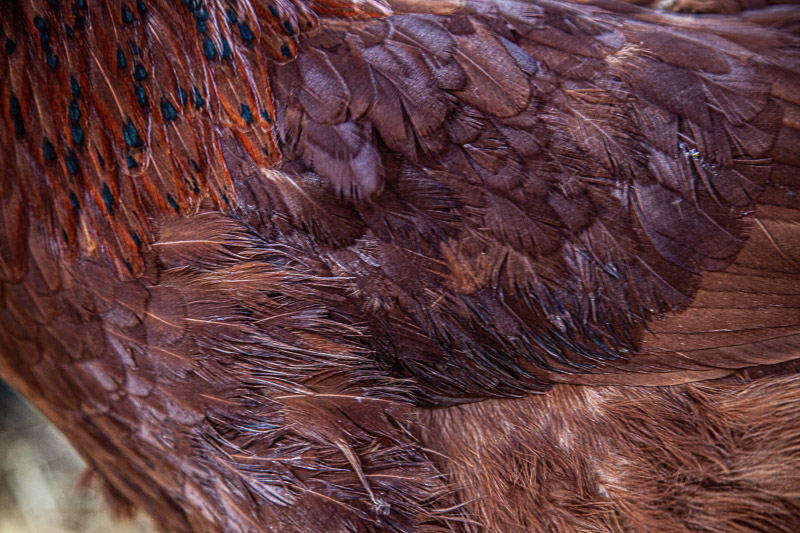
New Hampshire
This is far from a comprehensive list, and just a few pointers.
Safety and protection from predators.
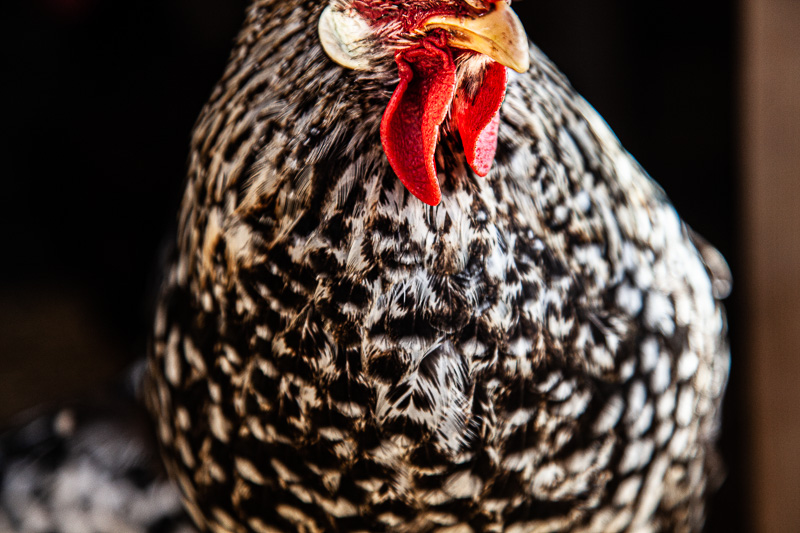
Ancona
We have made a safe home for our chickens by enclosing their entire area in wire and have also placed wire along the boundary to prevent dogs or foxes from digging under. We have protected them from the harsh setting summer sun by building a tool shed to the west.
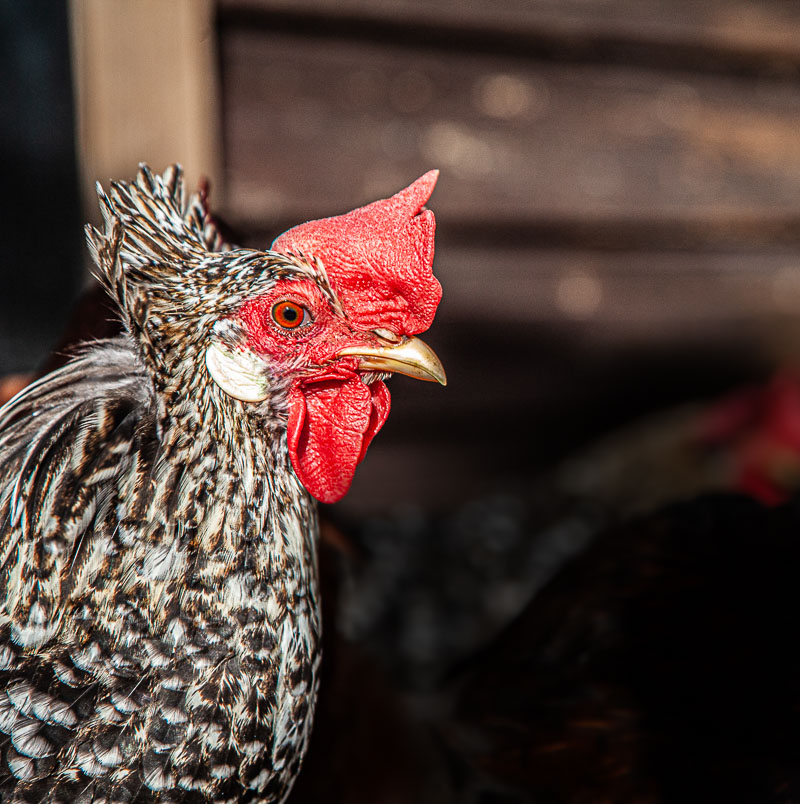
Ancona
We will build a green roof; the soil will act as an insulator and the plants if they survive the summer heat and lack of rain will beautify our building.

New Hampshire
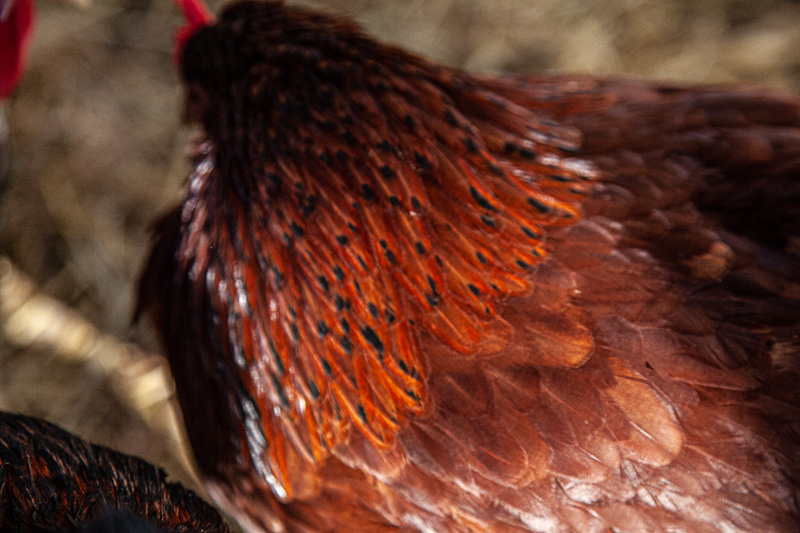
New Hampshire
The nesting boxes are in a weather proofed area and I have spread a thick layer of straw throughout the run and nesting area to insulate them from the cold wet winter earth. The straw also acts as a sieve. Manure produced by the chickens gets mixed into the straw by their scratching, diminishing the chickens direct contact with its own faeces. Straw also allows them to scratch and look for wheat seed among it, keeps the chickens from getting bored and combined with their manure produces beautiful compost. What we have yet to do is place perching rods so that they can sleep up high. A high perch provides added protection from predators, allows the chickens to defecate during the night without soiling themselves. And we have yet to install doors to their resting and nesting areas to reduce winter cold.
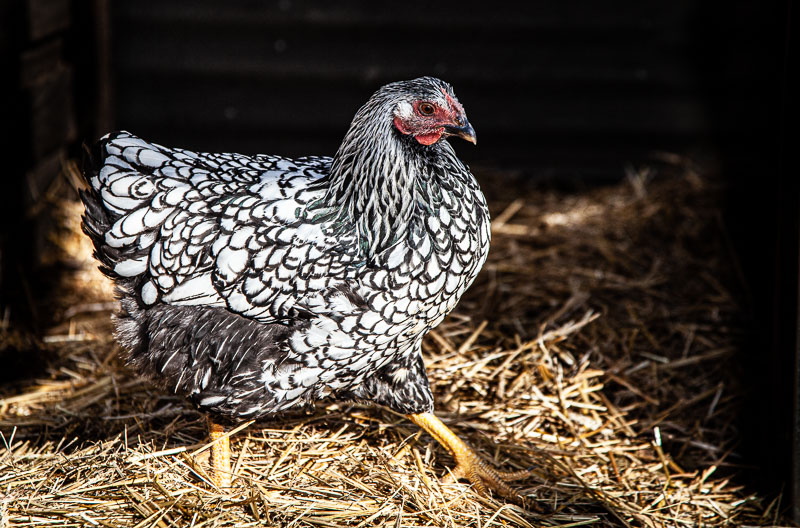
Silver Laced Wyandottes
We know that if we increase their comfort and wellbeing, they will be supported to lay eggs for us.

Silver Laced Wyandottes
I have placed a very large metal drinking bowl in their run as they must never run out of water to drink and I change their water every second day. Our worm farm is now placed in the run as well this way once the worm farm is established, I will be able to feed my chickens a constant supply of worms.
Large heavy rocks have been placed throughout. I water them occasionally in order to encourage, worms, slaters and ants to retreat to the warm, moist surface underneath. Every four weeks I turn the rocks over and the chickens feast. I also use the rocks to pin down garden greens so that the chickens can easily peck small pieces off.
A grandpa feeder has been ordered, this will make it possible for me to fill it with grain and the chickens will have access to feed all day long which they need. The feeder has an anti-flick grill which will reduce grain waste.
I will start adding just a little drop of apple cider vinegar to their water once every few weeks and fresh garlic to their feed.
I have planted two Artemisia arborescens shrubs as it is said to repel mites and expel intestinal worms. I will harvest leaves from it and line my nesting boxes with this wonderfully aromatic plant.
In summer I will need to help them keep cool by watering their run, providing fresh greens and making sure their drinking water is filled with ice blocks.
I am hoping to buy a few more heritage chickens and will be visiting the Kyneton Poultry Club auction in October this year. I will need to commit to spending only a pre-determined amount because I can see that I will be tempted to purchase every beautiful chicken that I see.
As I was writing this, I was pleased to find that I still had a copy of Chookwise a small very informative publication by Linda Marold, who lives in Guilford, Victoria. I wonder Linda if you are still in this world, as I bought your book 20 years ago, at the 1999 permaculture course with David Holmgren and Su Dennett and find it invaluable.
I came across this website recently which was very informative.

I finally just read this Mara. So helpful thank you darlin xxx
you are welcome. baci tanti tanti.